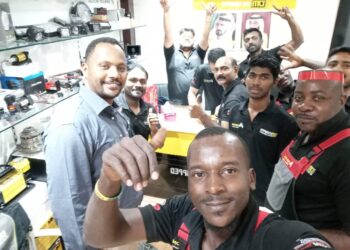[Kampala, Uganda, November 06, 2017]Despite the rapid advancement in information communication technologies (ICT) globally, the vast majority of people across Africa remain either unconnected, or only have access to slow internet connections.
On the continent, the average broadband penetration rate sits at less than 1%, while 80% of connected households have to make do with bandwidth of less than 2Mbp/s. While approximately 20-million households in the region are in dire need of access to broadband.
While copper cables and/or optical fibre is often used to deliver stable and fast home broadband (HBB) services in cities with favorable economic conditions, providing similar infrastructure beyond urban areas is more challenging.
Wired access deployment is costly, time-consuming and expensive to maintain, while sparser populations and lower disposable income levels in rural areas results in a poor return on investment (ROI), and it becomes clear that an alternative is needed.
Fibre-like experience
Huawei’s Wireless to the X (WTTx) broadband is the ideal solution for operators looking to expand coverage beyond urban centres. Based on 4.5G wireless broadband technologies, including massive MIMO and carrier aggregation, WTTx significantly improves spectral efficiency and provides bandwidth of over 1 Gbp/s, giving home users a fibre-like experience.
High-gain plug and play customer premise equipment (CPE) – a wireless household gateway – is used to provide the entire range of mobile broadband (MBB) services for end users, including video broadcasts, VoIP, enterprise networks, and even VR movies, and gaming.
Unlike copper or fibre, which requires trenching and/or pole installations, operators can leverage existing 4G base stations for WTTx, significantly reducing network deployment time and costs, while also helping operators to increase their monthly average revenue per user (ARPU).
ITU statistics show that 148 countries around the globe have proposed national broadband strategies to enhance the broadband penetration rate and internet experience. Many operators in sub-Saharan Africa consider WTTx as a top priority, and have provided WTTx broadband access to over 1 million households by 2017.
Complementary technologies
WTTx can be deployed during initial stages of broadband service development to understand local broadband requirements; if user has higher experience requirement, operators are advised to focus on FTTx to improve user experience and increase revenue.
In villages and towns with FTTx networks and close to large cities, operators can provide WTTx-based differentiated products to develop a competitive edge, boasting both complementary fixed and mobile networks. WTTx+FTTx hybrid networking mode allows operators to quickly gain broadband users, shorten ROI periods, and improve ROI.
International successes of the innovative WTTx solution has help operators to develop and gain revenue in a blue ocean market, and the technology is expected to be a key contributor to increasing broadband penetration and connecting ‘the next billion’.
For more information and customer stories of Huawei, please join us at AfricaCom 2017?“AfricaCom 2017“?????
http://www.huawei.com/za/events/za/africacom2017?utm_medium=display&utm_source=&utm_campaign=AfricaCom?
Do you have a story in your community or an opinion to share with us: Email us at editorial@watchdoguganda.com











